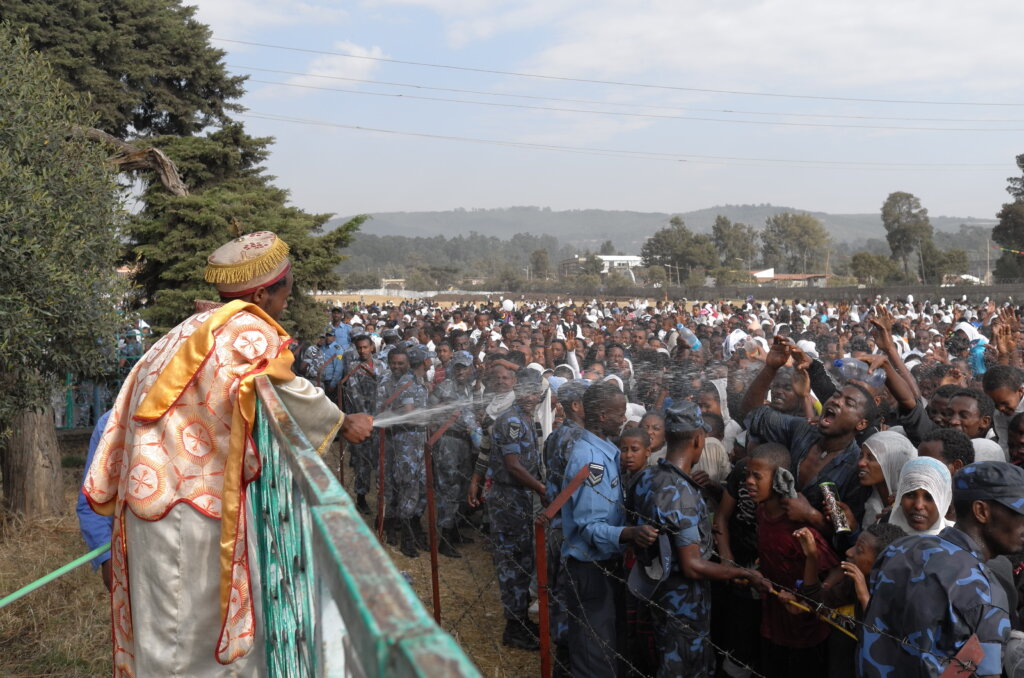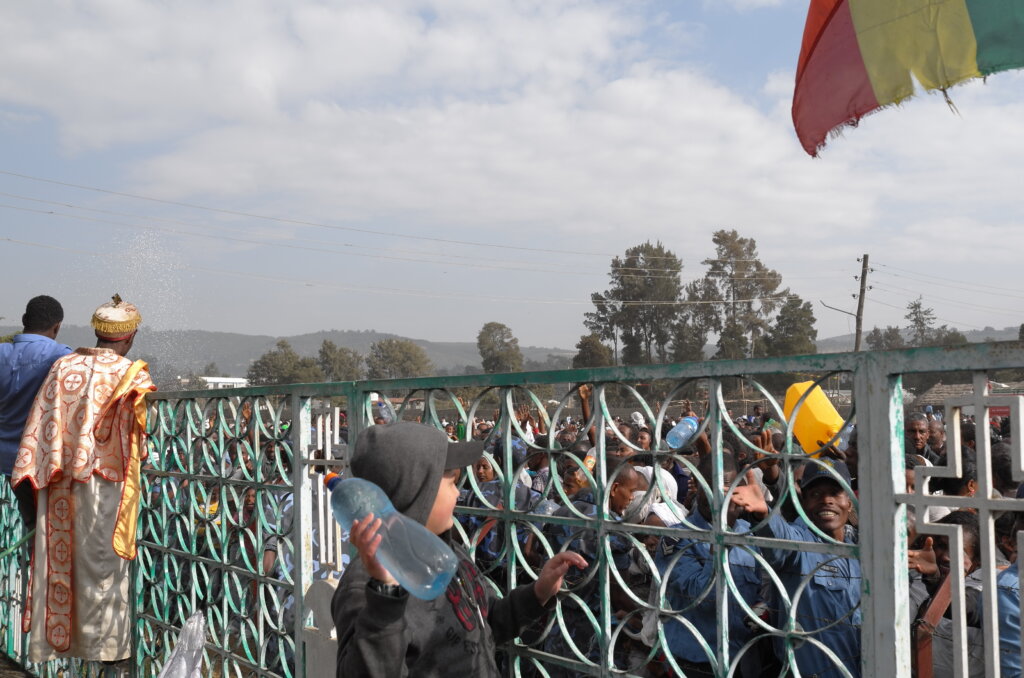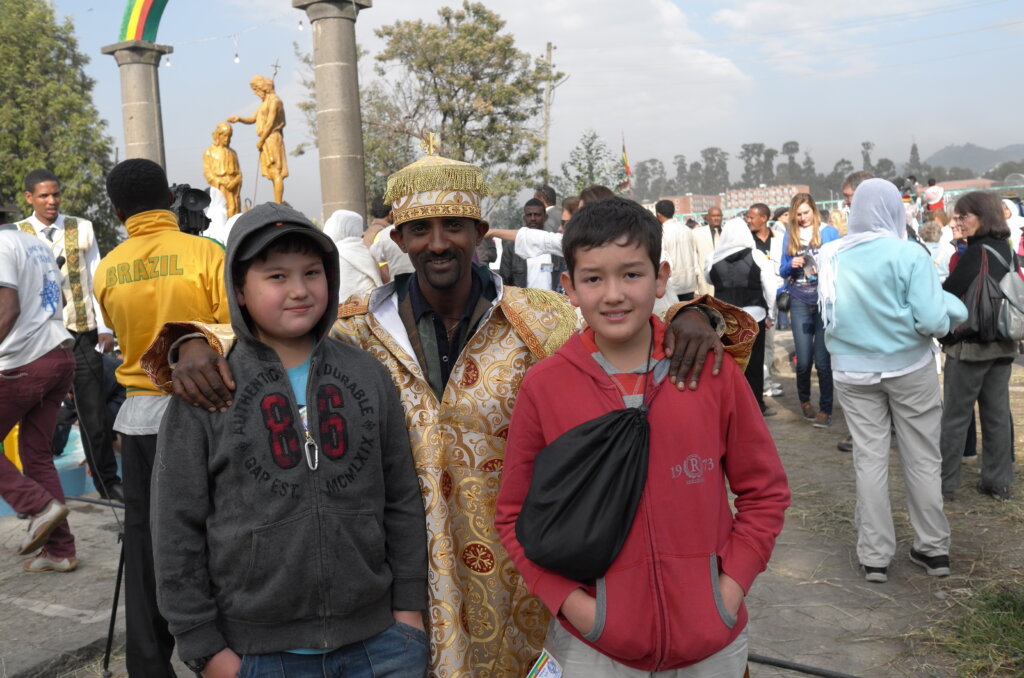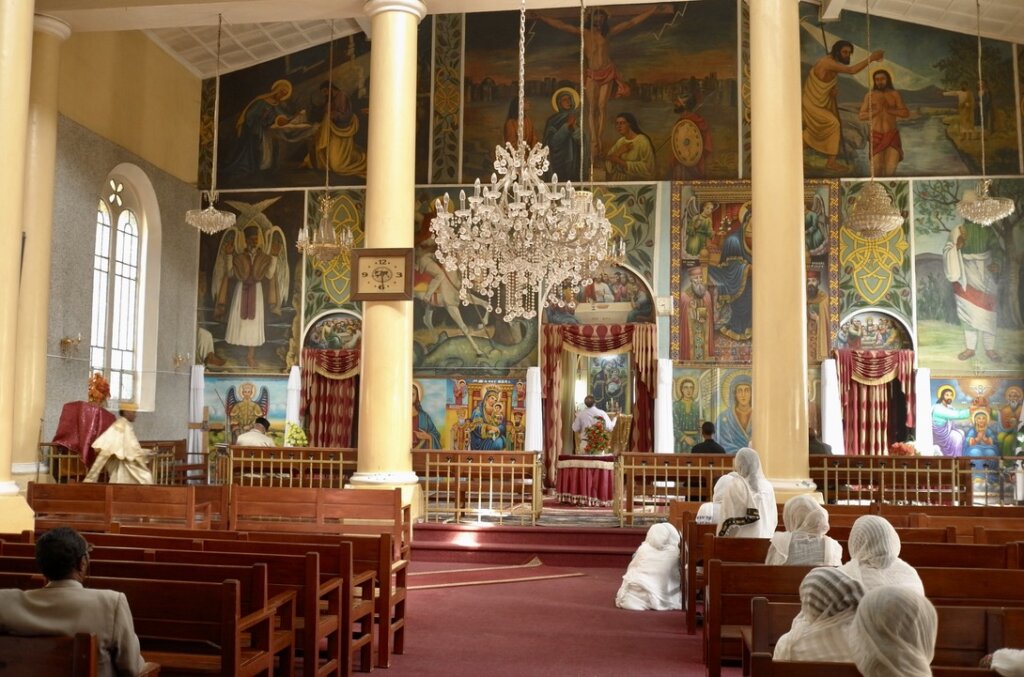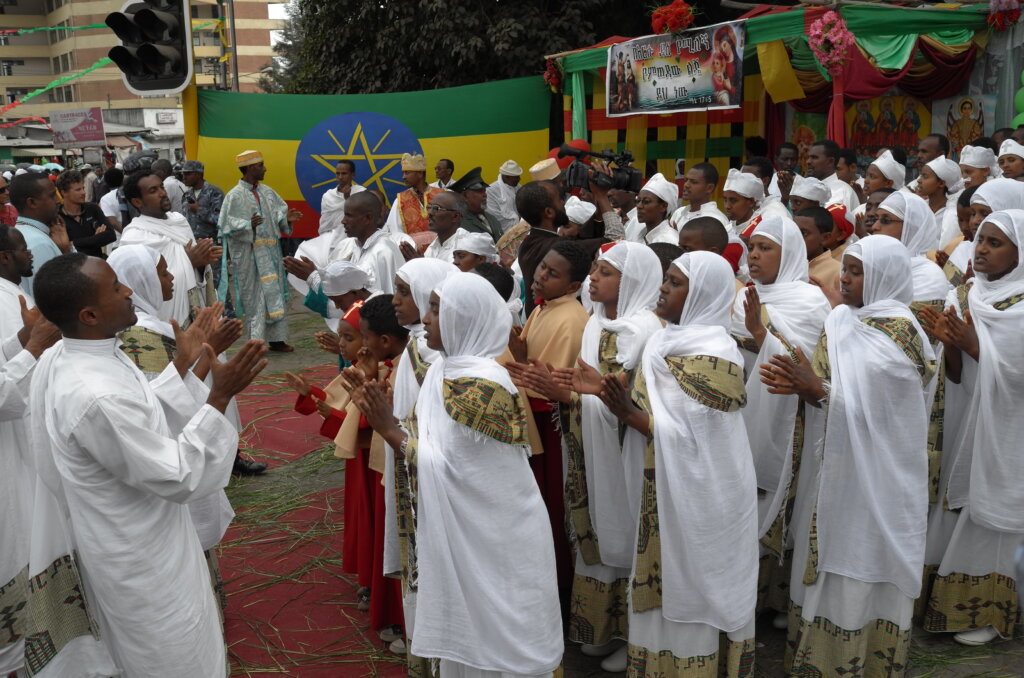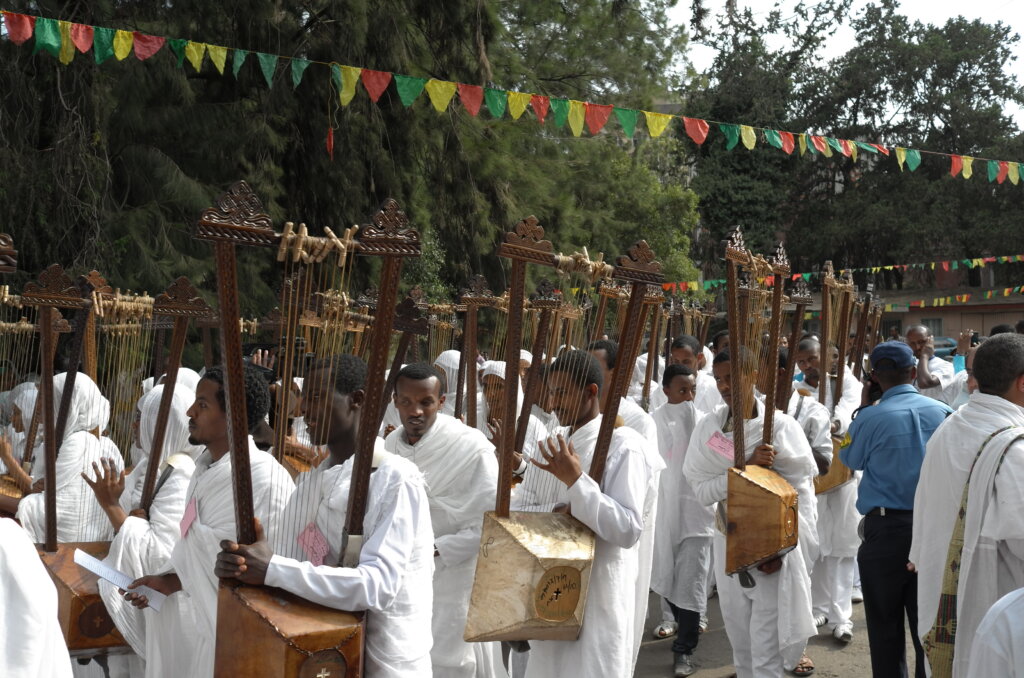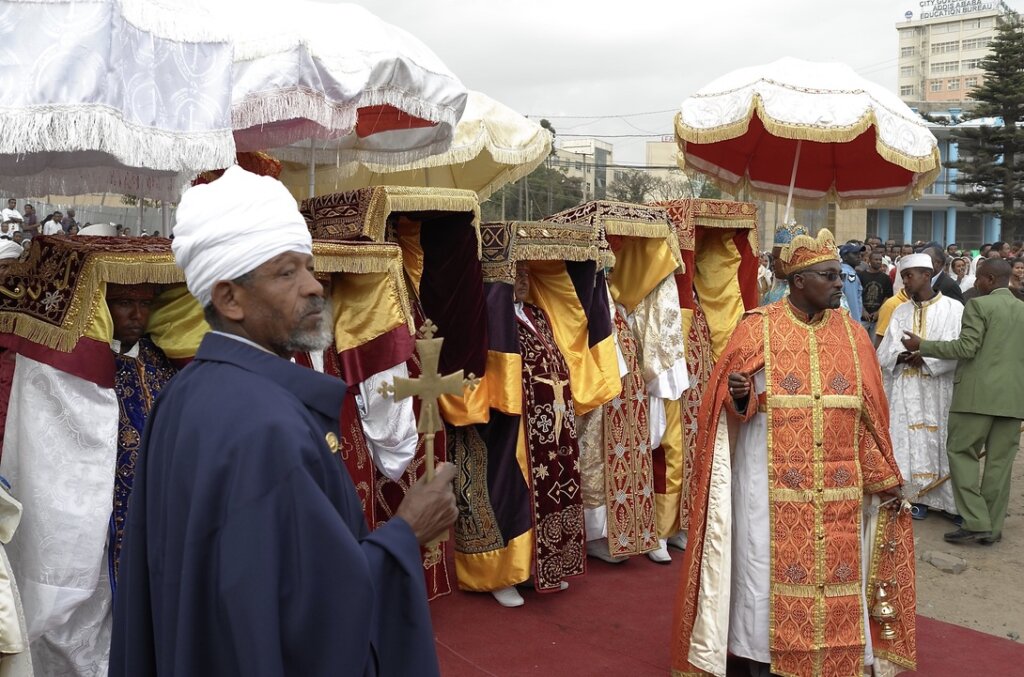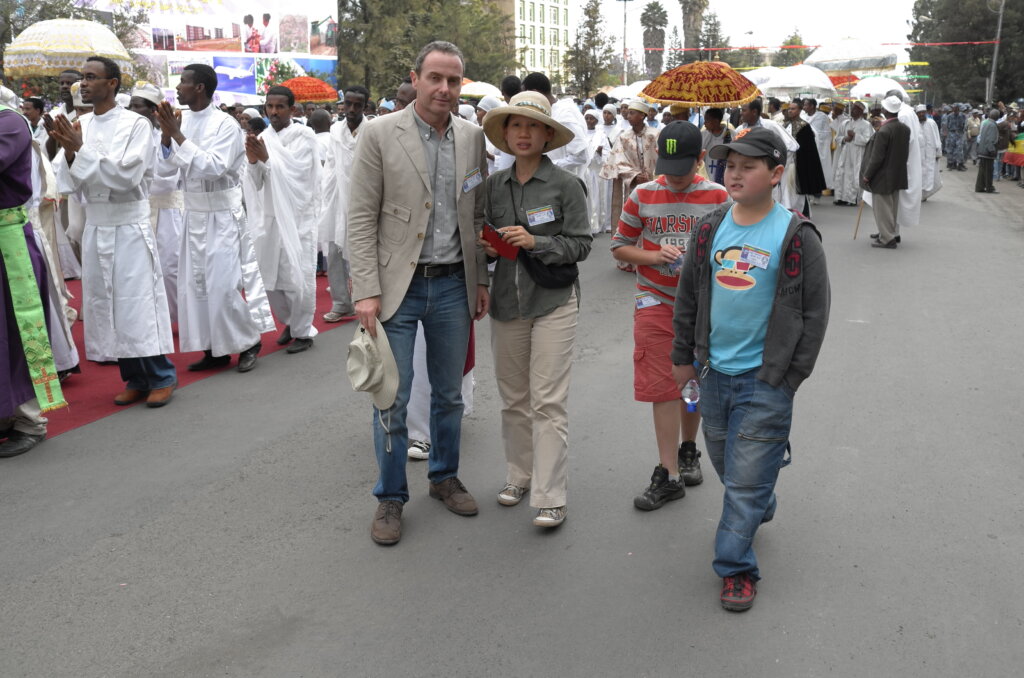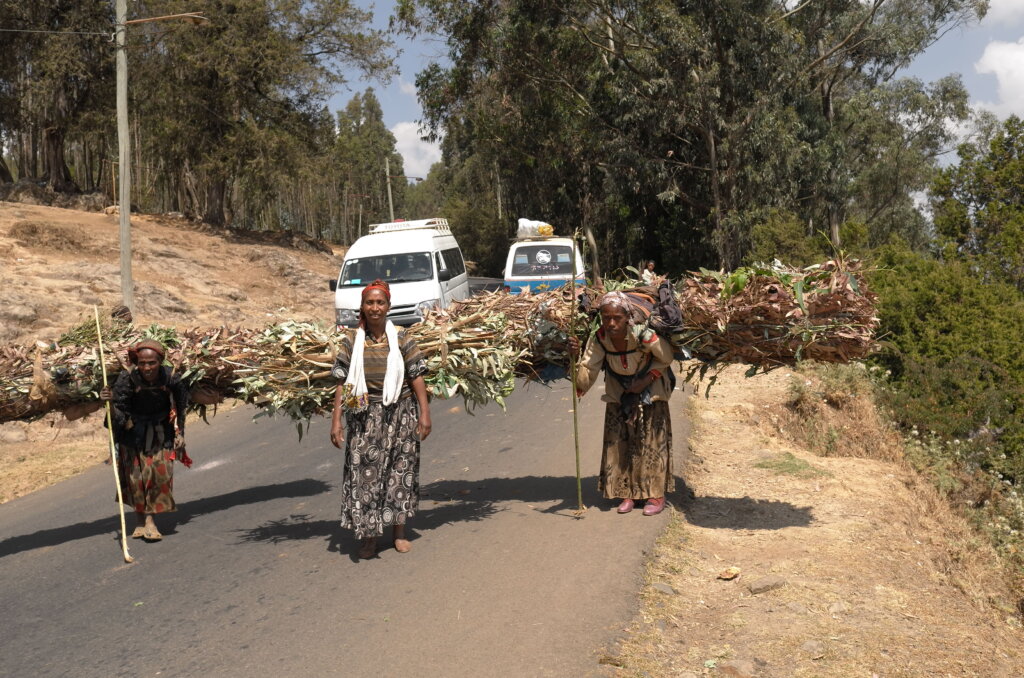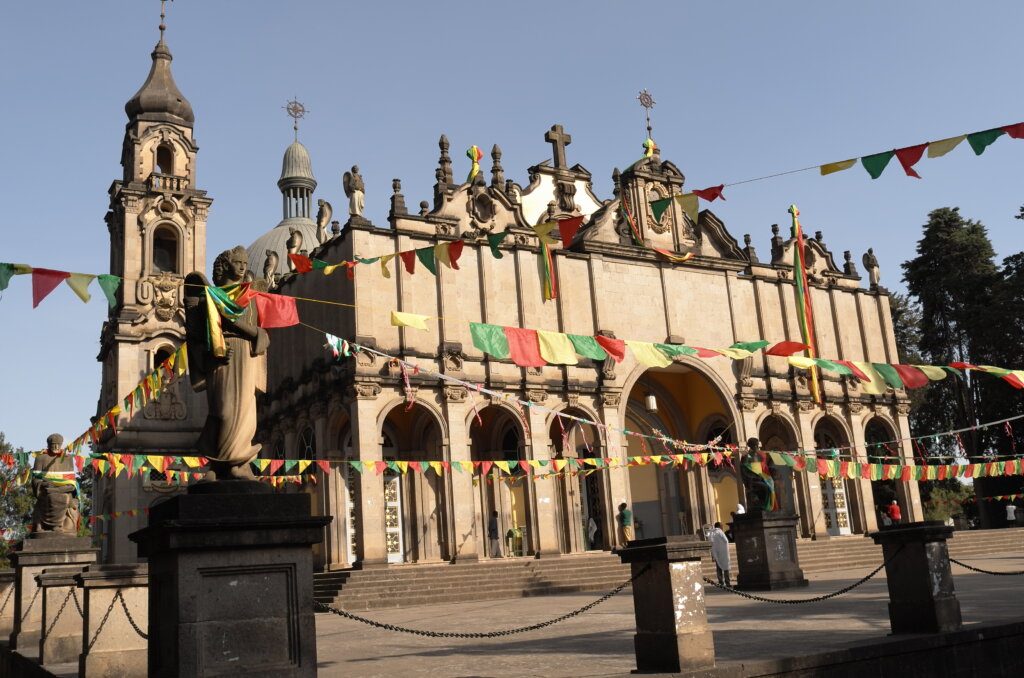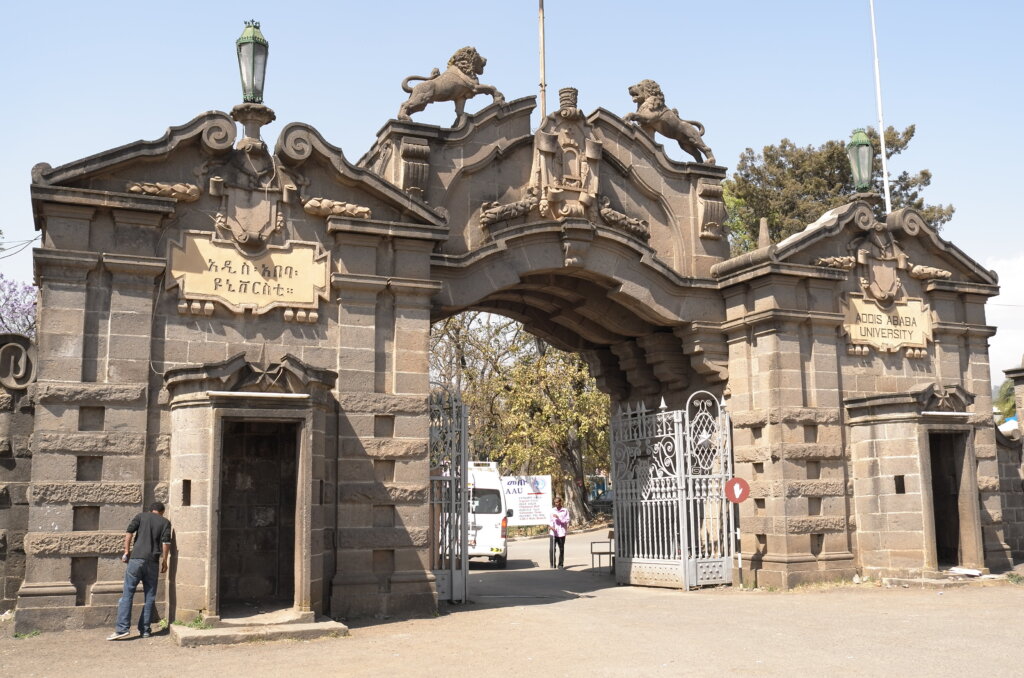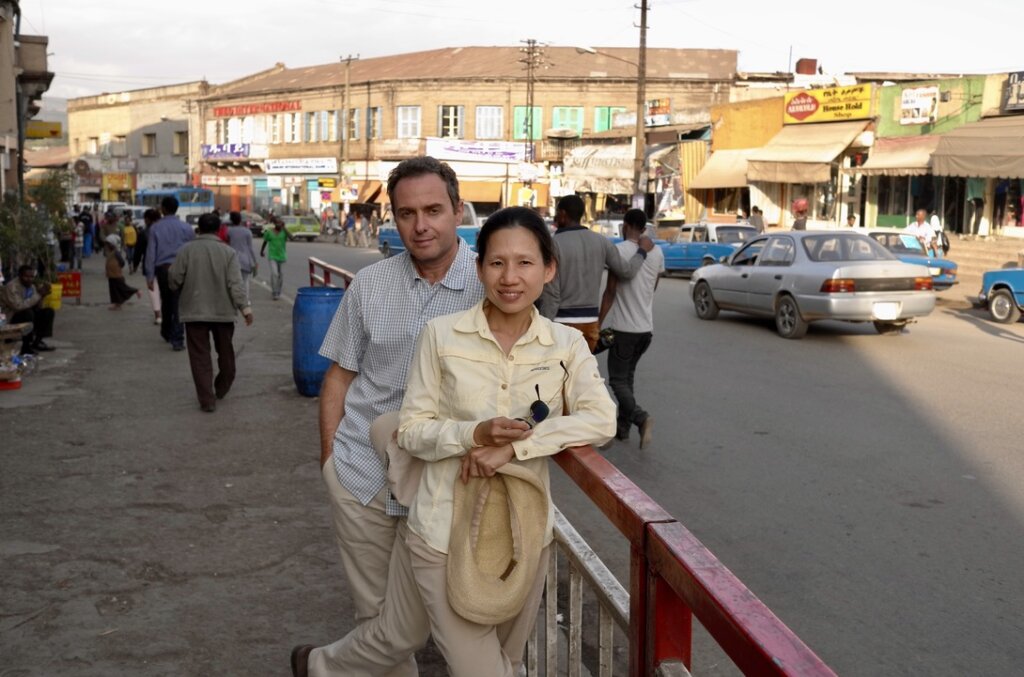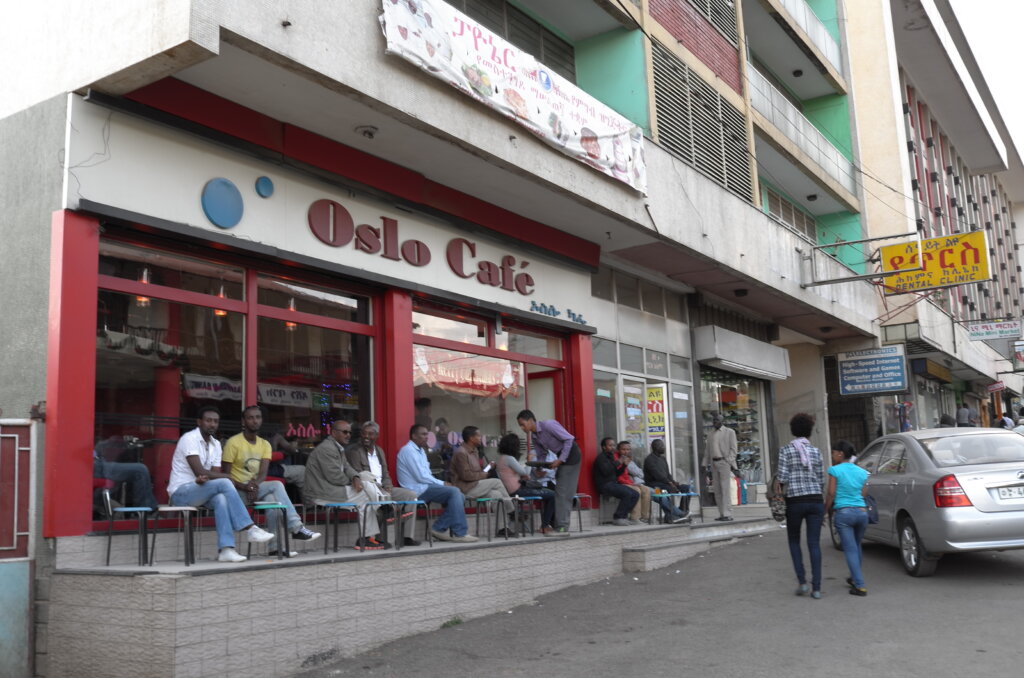Early in the morning of the 19th of January, we gather with the faithful at the field where the Tabots are kept. We are privileged to be admitted to the inner sanctum where the pool of blessed water is – with the patriarch and senior clergy.
Outside of the sanctum, hundreds of thousands of the faithful have been waiting all night for the patriarch to say mass and bless the pool, re-enacting the baptism of Jesus in the river Jordan.
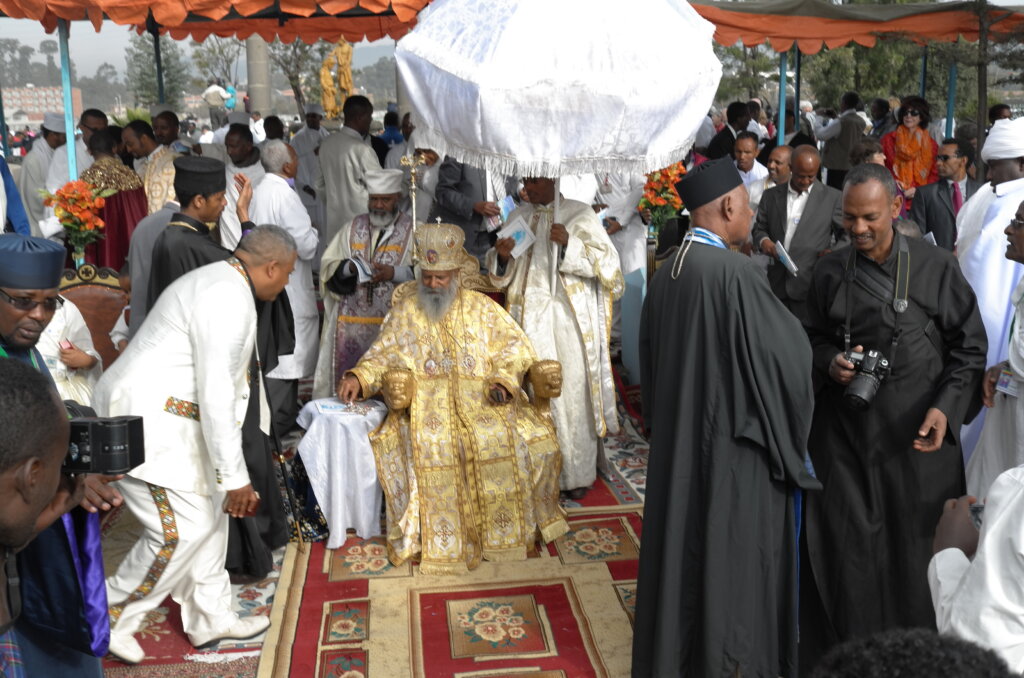
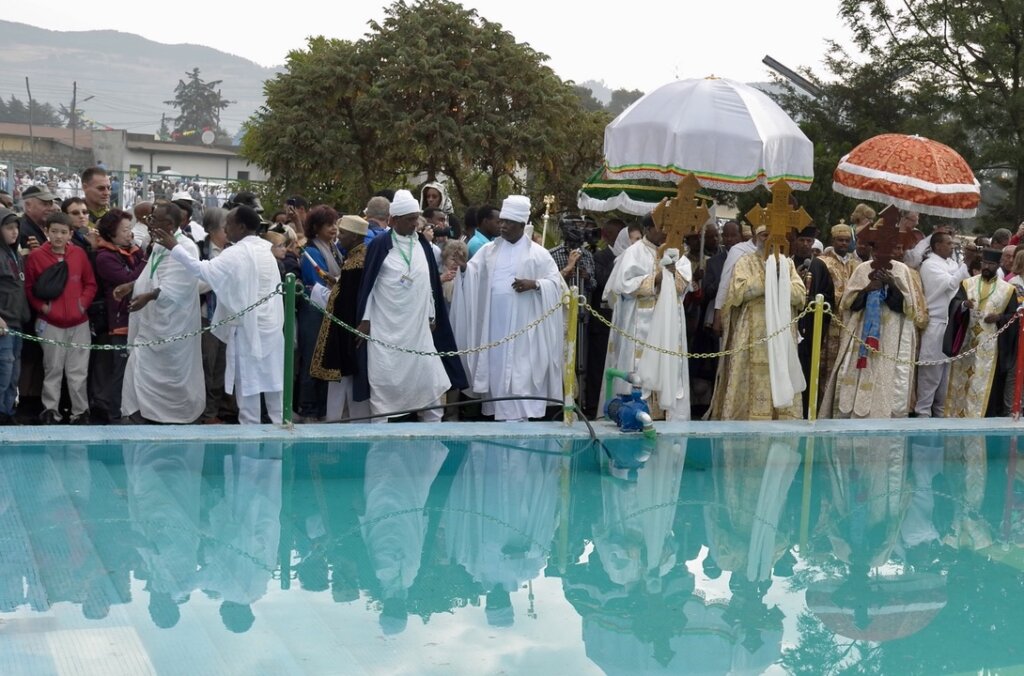
After chanting and prayers, we witness the blessing of the pool. And then…technology kicks in ! The patriarch is handed a water hose plugged into the pool and starts to spray the audience with a mischievous grin on his face. And thus are we blessed (or soaked, depending on the perspective!) by the Patriarch of the Ethiopian Orthodox Church.
Priests wielding more hoses then proceed to spray the crowds surrounding the Inner Sanctum. At that point, the observers become actors as people in the crowd throw us empty bottles across the fence for us to fill up in the pool of holy water and throw back to them. For a moment, it is pure chaos as the police try to prevent us from throwing the bottles of holy water while the priests spur us on.
